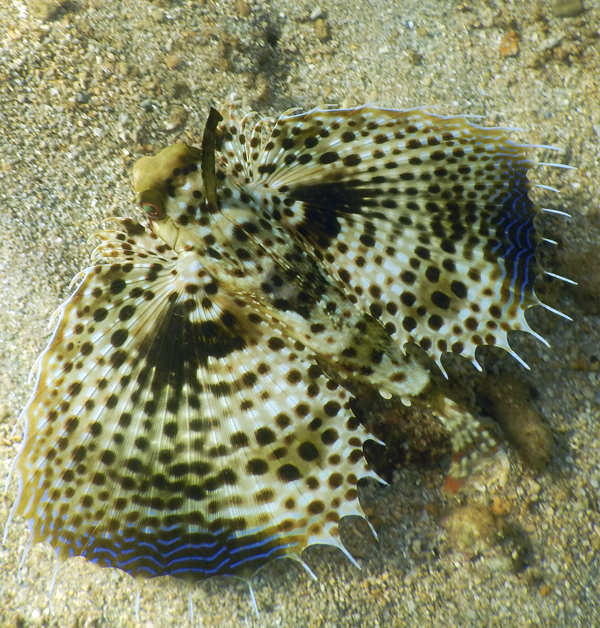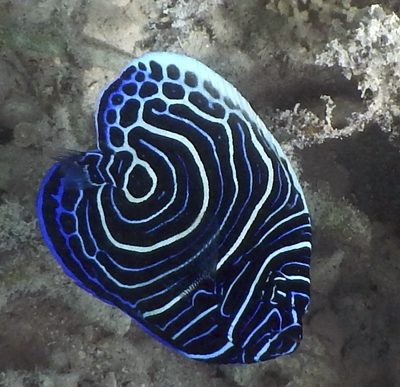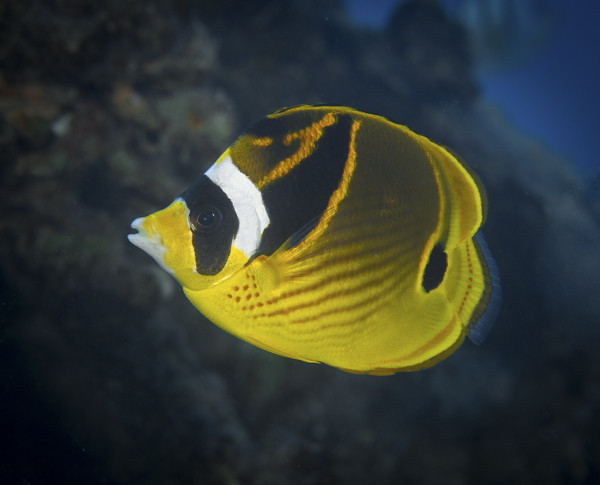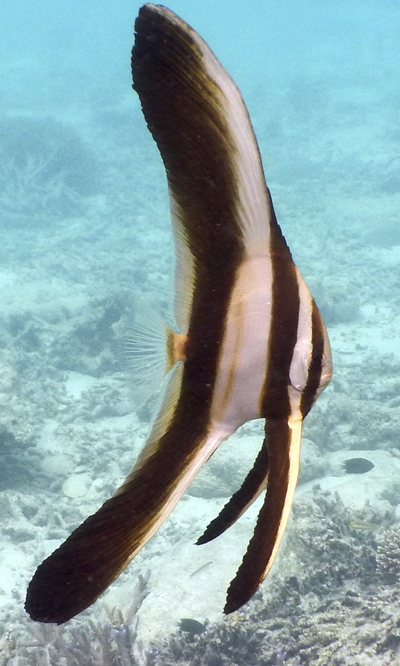Published in the Ocean Watch column, Honolulu Star-Advertiser © Susan Scott
August 25, 2014
In 1981 I rented mask, snorkel and fins and, for the first time, gazed upon a coral reef. My impression: Such color! The swirling yellow, green, pink and blue fish looked like an underwater confetti toss.
My awe over the colors of reef fish has never faded. To this day, seeing their gaudy colors displayed in such eye-popping patterns makes me happy to be alive.
But how do the fish survive? In the fish-eat-fish world of the ocean, those colors and designs look like neon signs saying, “EAT HERE!” It seems a miracle that any make it to adulthood.
When it comes to being flashy, the pros have to outweigh the cons.
Although countless colorful reef fish do get eaten, being bright isn’t as dangerous as it looks. Those horizontal stripes, vertical bars, frilly fins and diffuse polka dots break up a fish’s shape so that some predators don’t immediately see it as a fish. This form of camouflage is called disruptive coloration.

Another common countermeasure to reef fishes’ conspicuous attire is the Lone Ranger strategy: They wear a mask. Because a fish’s head and eyes are primary targets for an attack, black bars running across the eyes of many species make a predator unable to tell heads from tails.

To add to the confusion, many reef fish have a false eyespot or two on their back or rear fins. A bite to a fin gives the prey a fighting chance to escape and recover. And it works. It’s common to see a ragged fin on an otherwise healthy fish.
On a reef teeming with hundreds of species, sporting yellow stripes, pink spots or blue-lined fins has a huge advantage: Distinct colors and markings enable fish to find their own kind. Such fellowship is crucial for an individual to romance the right species, join the best school and link up with a successful security team.
Good examples of color and design helping fish get it right are members of the flamboyant butterflyfish family, named for their resemblance to butterfly wings.
-
 Raccoon Butterfly Fish
Raccoon Butterfly Fish
Courtesy Russell Gilbert
On the reef, we often see butterflyfish swimming in tight pairs. These are the coral eaters, and the couple is a male and female that stick together year after year. The standout markings of each species help the butterflyfish partner up with the right kind, and then keep track of that partner for mating and guard duty.
Coral-eating butterflyfish don’t wipe out coral colonies because the fish take tiny bites from large territories that the couple defends together. In ousting trespassers from a sprawling estate, two fish are better than one.
Other butterflyfish species graze on tiny animals drifting in the water, settled on the seafloor or stuck to rocks in the form of eggs. These butterflyfish often band together in gangs, all the better to overpower a damselfish dad guarding his eggs or to scout for food in a vast ocean.
That first snorkeling experience I mentioned was in Mexico’s Garrafon Natural Reef Park, a marine preserve that will always be close to my heart. I had a wonderful experience that day, but the sanctuary gave me more than colorful fish: It painted a picture that remains forever bright.
